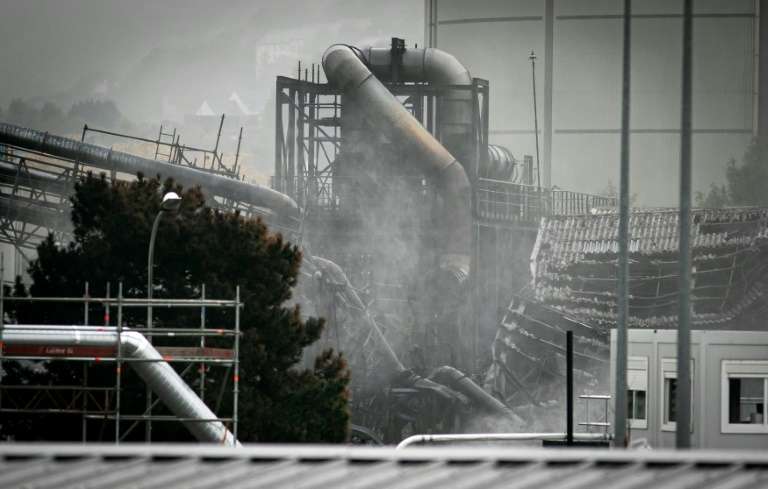France remains little prepared for industrial risks

Twenty years after the AZF disaster in Toulouse, where are we in France? We recently experienced the fire at the Lubrizol chemical factory in Rouen and, according to the Industrial Risks and Pollution Office, the number of accidents on industrial sites has increased by 34% in two years. How many facilities are classified at risk? What observation can be made of this situation? Explanations in a few figures and action plans to carry out.
Almost 20 years after the AZF disaster, France still seems insufficiently prepared for the risk of an industrial accident, in the light of the hearings carried out by the Parliament on the “extraordinary fire” of the Lubrizol chemical plant in Rouen two years ago month.
“We knew the tocsin go to the siren at the beginning of XIX th century. I think in XXI th century (…) we must move on to the “cell broadcast” , “that is to say to the alert of the population by mobile phone Thursday raised the prefect of Normandy Pierre-André Durand before the Senate commission of inquiry into the fire at the Seveso high threshold factory. Because “when a siren sounds, you have to stay at home […] but who knows?” Continued the senior official, explaining why he did not activate the sirens until 8:45 am for a fire that had started around 2:30. This system “Cell Broadcast”, Practiced in particular in the United States and in Japan, and which Brussels requests the installation for June 2022, would make it possible to prevent while giving an instruction. And to prevent mayors from being officially alerted by the prefecture until twelve hours after the start of the disaster, as was the case on September 26.
But for Amaris, the association of communities for the control of major technological risks, failures go far beyond “inaudible” sirens. According to a white paper which it published at the beginning of November and cited by the members of parliament, “the protection of riparian activities […] remains a step to be taken” in France.
A distanced culture of risk
Faced with the “very French problem of a fairly distant risk culture”, according to the prefect for a population to have “good reflexes, there are only exercises“.
“To my knowledge at the scale of large agglomerations, there is no exercise“, for his part noted the PS president of the metropolis Yvon Robert, extremely reserved as for such exercises. According to him, almost 2.5 million people live near the 1,312 French Seveso sites. In the wake of the AZF disaster which killed 31 people in 2001, measures had been taken, such as the creation of technical risk prevention plans (PPRT).
“Lubrizol’s PPRT means that the fire only occurred on less than 10% of the site,” said Yvon Robert. And there were no casualties in the incident. But that did not stop the fire out of water against three hectares of fire of hydrocarbons. “We realized that firefighters are not necessarily equipped to go to sites such as ours,” said Corinne Adam, CFTC delegate from the Lubrizol factory.
In France, the number of accidents has increased by 34% in two years
According to the Industrial Risks and Pollution Office (Barpi), the number of accidents on classified industrial sites has increased by 34% in two years in France, and their impact on the environment is increasing. In 2018, France had 1,312 Seveso sites, including 705 high threshold, such as Lubrizol in Rouen, and 607 low threshold. At the end of 2015, during the last census, France had 1,261 (700 at the high threshold and 561 at the low threshold).
The installations classified for environmental protection (ICPE), are “industrial or agricultural operations that may create risks or cause pollution or nuisance, particularly for the safety and health of local residents.” They fall into three categories according to their potential dangerousness: from the least dangerous subject to “declaration”, to the most dangerous subject to “authorization”, such as the Seveso.
France had a total of 494,000 classified installations at the end of 2014, according to the ministry. Accidents have “a much more frequent environmental impact […] noted in 35% of cases in 2018 instead of 25% in 2017“, specifies the Barpi. The human consequences are, in retreat, with five deaths in 2018, according to the inventory. The total number of injured (25 among the population in 11 accidents) is “significantly lower than in 2017, to the detriment, however, of a more pronounced seriousness“.

Fewer inspections on classified sites but more sanctions
If the number of inspectors has remained more or less constant, the number of visits to classified sites has “dropped by 40%” (18,000 in 2018 against 30,000 in 2006), assured David Romieux (CGT) before the commission of Senate investigation into Lubrizol on Wednesday. The ministry counted 18,196 inspection visits in 2018, against 20,000 in 2014. And a 34% drop in visits between 2006 and 2014. The number of administrative sanctions increased, however, going from 320 sanctions in 2016, to 433 in 2018, emphasizes the ministry.
A point often mentioned before senators, “the use of subcontracting is not neutral in terms of risk management, in particular because the service provider sometimes knows little about the risks associated with unfamiliar installations. Employees of the client who no longer perform the technical gestures may lose their ability to understand the quality of the work carried out,” underlines Barpi.